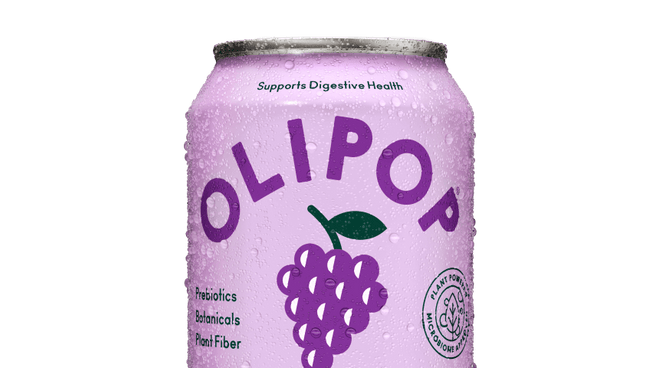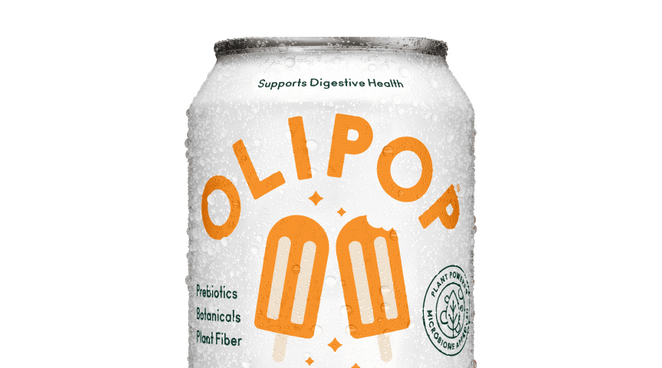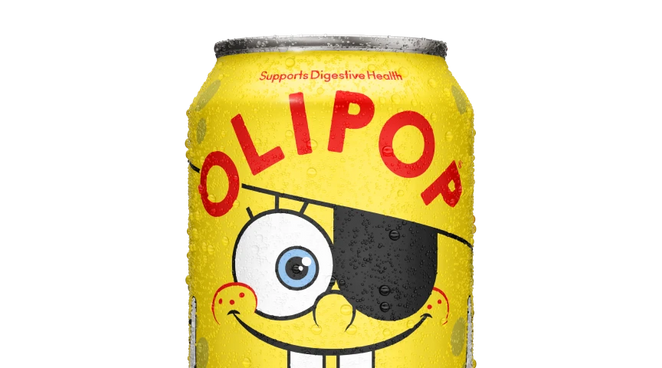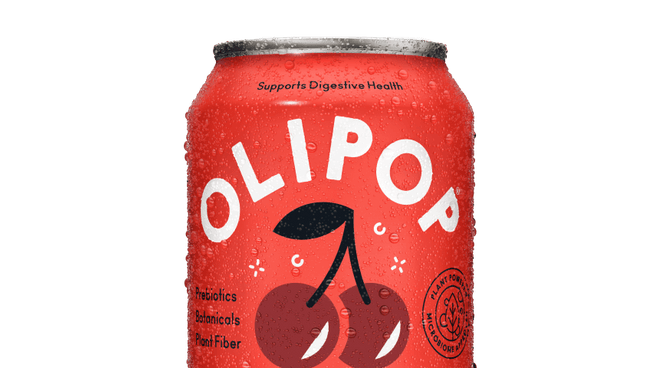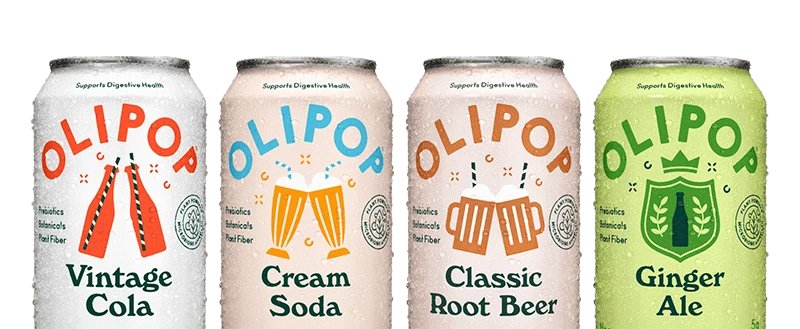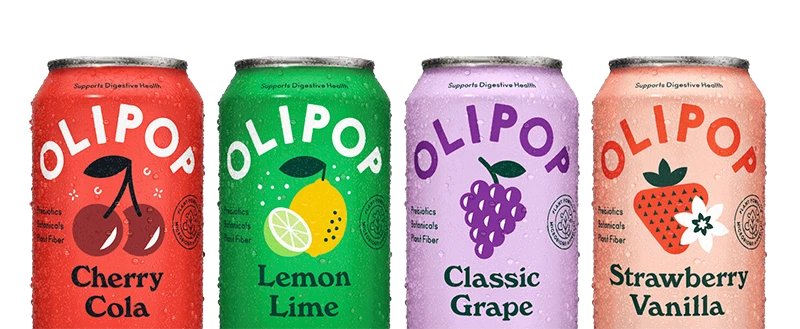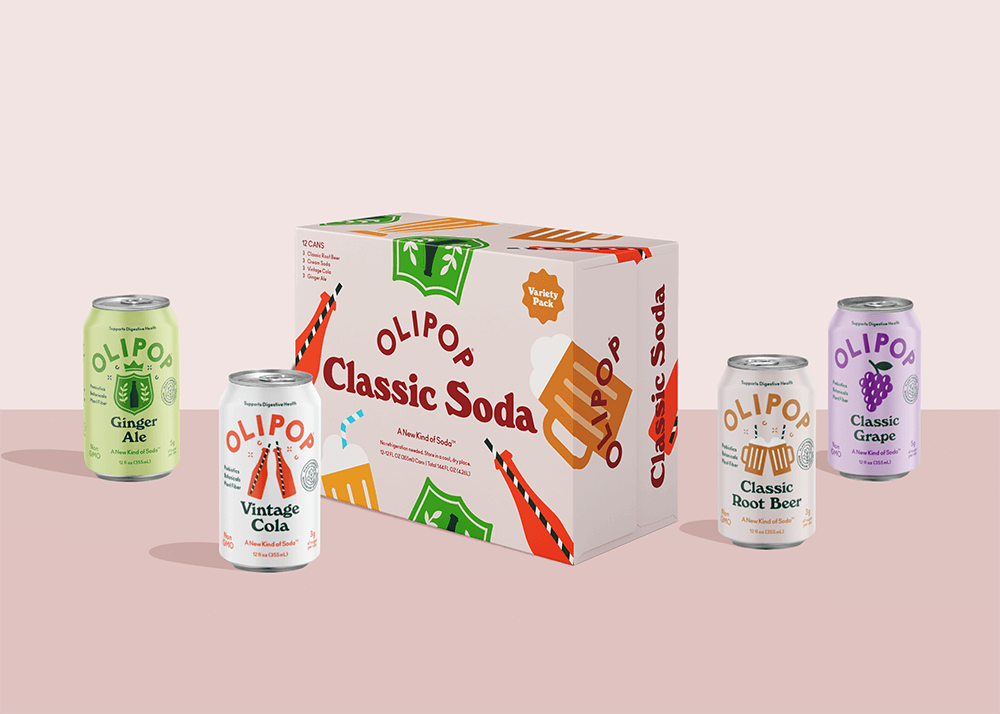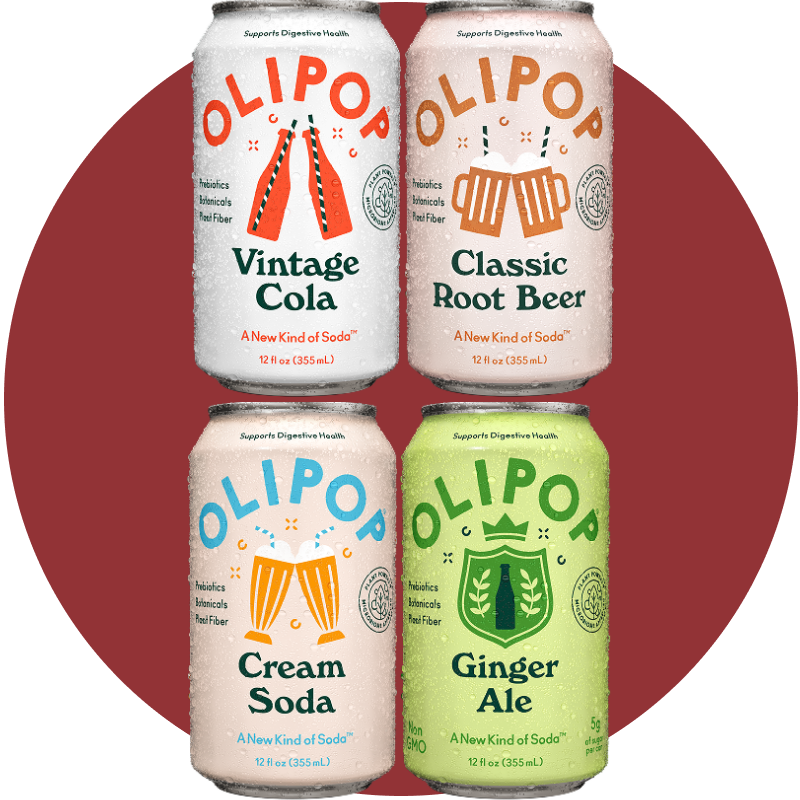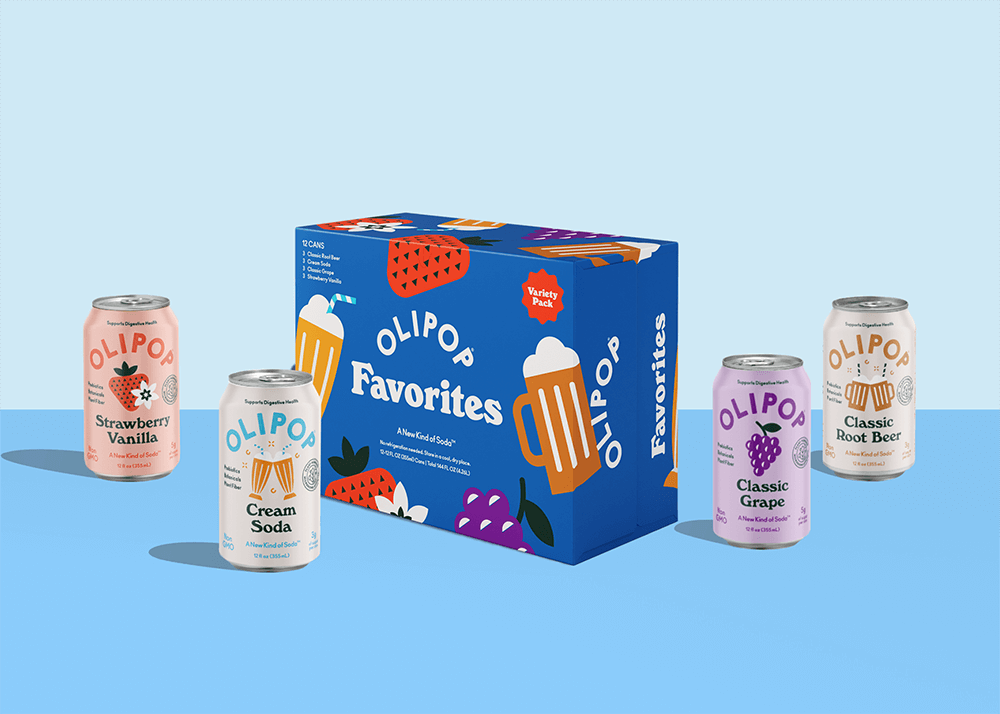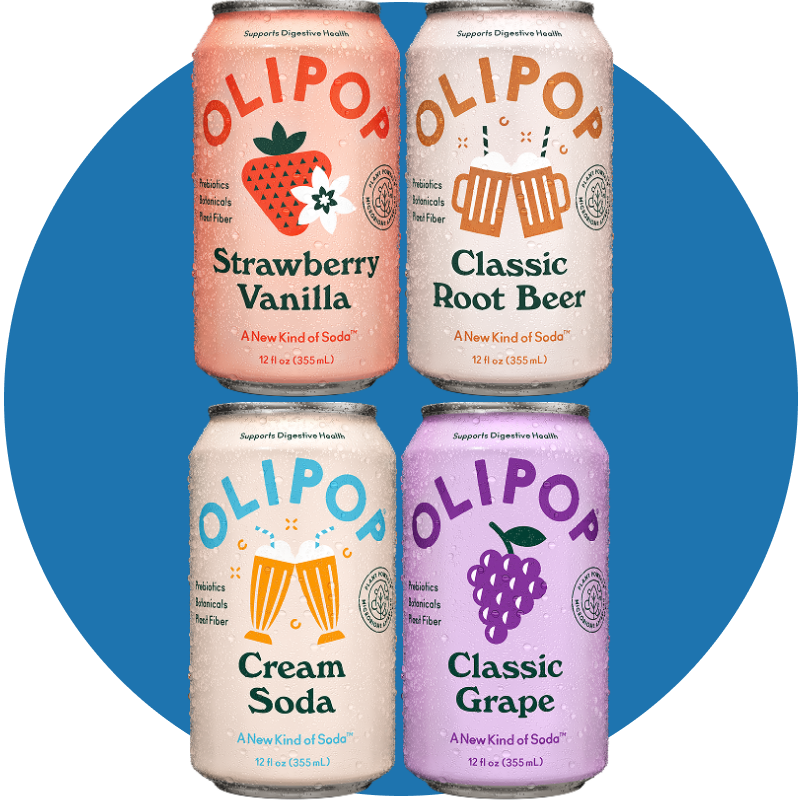Editor's Note: This article is reviewed by Lauren Manaker MS, RDN, LD, a registered dietitian and a paid contributor to OLIPOP. She specializes in digestive health and reviews OLIPOP content for scientific accuracy.
You may notice the word "inulin" showing up in many of your foods, especially those with low net carbs. (Like OLIPOP, for example!) While you may have heard this buzzy word over and over again, do you really know what it is?
If you don’t, read on to learn all about inulin and how this key ingredient may support a healthy lifestyle in a super-simple way.
What Is Inulin?
Inulin is a type of fiber found naturally in certain plants, with roots containing the highest concentrations. Although we started isolating and extracting inulin in the early 1800s, people have been eating inulin for far longer. In fact, you’ve likely been eating inulin throughout your life and not even realizing it!
Inulin Foods
It's estimated that inulin is found in over 36,000 species of plants as storage for carbohydrates.3 While it is pretty widespread in fruits, vegetables, and herbs, inulin has the highest concentrations in these foods:
- Chicory root
- Jerusalem artichoke
- Dandelion greens
- Garlic
- Onion
- Leeks
- Whole wheat
- Asparagus
- Artichokes
And you might already know that fiber is super important for your diet. So here's the good news: if you’re eating inulin, you’re getting extra fiber!
What Is Fiber?
Sometimes referred to as roughage or bulk, fiber is the component of plant foods your body can neither digest nor absorb. Instead of breaking down and absorbing like other food elements, fiber passes through your stomach and colon relatively intact.
Our nation’s leading health experts agree that you should aim to eat between 25-38 grams of fiber daily, depending on your age, gender, and other factors.1
Insoluble vs. Soluble Fiber
There are two types of fibers: insoluble and soluble fiber.
- Insoluble fiber: Does not dissolve in water. Instead, it passes through your small intestine into the large intestine, where it draws water into your stool for aided bowel regulation.
- Soluble fiber: Dissolves in water; the result is a gel-like substance that slows down the digestive process and makes you feel full. Underneath the umbrella of soluble fiber, there is a type known as prebiotics or indigestible starch. These types of fiber act as “fuel” for the live beneficial bacteria, or probiotics that live in your gut.
What Type of Fiber Is Inulin?
Inulin is a soluble prebiotic fiber that helps feed your “good” bacteria, and thus, aids in supporting a healthy gut microbiome.2
Chicory Root Inulin
Inulin is often extracted from chicory root and then added to foods to boost fiber content. However, because you can find inulin in such high concentrations in chicory root, occasionally, the names "inulin" and "chicory root" get used interchangeably. Other common names for inulin that you might see on a food ingredient label include oligosaccharides and oligofructose.
Do you ever look at a food label and wonder how a product that wouldn’t normally be so high in fiber boasts about its fiber content? The food industry uses inulin to boost the fiber content and act as a replacement for sugar or fat.
Inulin Health Benefits
Like all other dietary fibers, inulin isn't digested or absorbed in the stomach or small intestine. Its prebiotic properties work magic in the large intestine, supporting a healthy microbiota. It's here that the bacteria use it as ‘food’ to grow and multiply. Inulin is unique because it targets specific ‘good’ bacteria that support regularity and bowel function.4 Inulin also absorbs water which helps soften stools. Inulin may also support calcium absorption.6 Like other dietary fiber, inulin also provides a feeling of fullness and satiety.
Possible Side Effects Of Inulin
While inulin does offer many positive benefits to our health, too much of a good thing can be not-so-great. If you are increasing the amount of fiber in your diet, you could have some unexpected and uncomfortable side effects like bloating, gas, cramping, and possibly either diarrhea or occasional constipation.
When it comes to increasing your fiber intake, a slow and steady increase always wins the race! One pro tip is increasing your water consumption along with your fiber consumption. Long-term inulin and fiber intake help prevent you from “getting backed up” (aka constipated), which, in turn, requires water.
How to Add More Inulin to Your Diet
Because inulin is abundantly found in plants, we suggest starting with a food-first approach. The easiest thing is to pick a few food items that are high in inulin content. Foods like garlic, onions, leeks, bananas, asparagus, and artichokes will do the trick!
Eat Your Fruits & Veggies
To get the recommended 25-38 grams of fiber per day, focus on eating various fruits and vegetables. You’ve heard it before (your mom was right!): eat your fruits and vegetables. They are nutrient powerhouses and are jam-packed with inulin and other fibers. They also contain vitamins, minerals, phytochemicals (active compounds found in plants that have health benefits), and water—so you get a lot of nutrition bang for your buck.
Choose 100% Whole Wheat
You can also increase inulin and dietary fiber by choosing products made with 100% whole wheat. But, make sure you double-check the nutrition labels of bread, cereal, and cracker products before consuming! The best products with the most amount of whole wheat will list it as the first ingredient, and it should be 100% whole wheat flour.
Today, you can find many processed foods like cereals, granola bars, and even dairy products like yogurt and ice cream that have added chicory root to boost the fiber content. Depending on your nutrition and calorie needs, you will need to determine whether or not adding these types of products to boost fiber is the right choice. Just because a food has boosted its fiber content, doesn’t mean it is a food that you want to be eating more of.
What About Inulin Supplements?
What about supplements? Inulin supplements are available as powder, capsules, and gummies. You can add powders to shakes and beverages as well as baked goods.
Experiment to see what works for you! Start slowly by adding fruits, vegetables, and 100% whole wheat products—maybe introduce one a week and see how you feel. Add one cup of water per week to help your body adapt to the increase in fiber. In no time you'll be reaping the health benefits of inulin.
Drink Soda! Inulin in OLIPOP
If you’ve looked at the OLIPOP ingredient list you may be wondering what the heck a veggie extract like inulin is doing in a can of soda! But, as you might have noticed, OLIPOP is high in fiber.
This is, in part, thanks to the inulin added to its ingredients. Cracking open a can and enjoying an OLIPOP is something you can easily do that will help you meet your fiber needs and load your body up with beneficial inulin — especially if your diet is lacking in foods like garlic, chicory, and Jerusalem artichoke. Do something good for your gut and your taste buds at the same time — it’s a win-win, right?
Sources
- American Heart Association. “Whole Grains, Refined Grains, and Dietary Fiber.” Reviewed September 20, 2016. https://www.heart.org/en/healthy-living/healthy-eating/eat-smart/nutrition-basics/whole-grains-refined-grains-and-dietary-fiber Accessed June 3, 2021.
- Vandeputte D, Falony G, Vieira-Silva S, Wang J, Sailer M, Theis S, Verbeke K, Raes J. “Prebiotic inulin-type fructans induce specific changes in the human gut microbiota.” Gut. Vol. 66, no 11, 2017, pp. 1968-1974. doi: 10.1136/gutjnl-2016-313271.
- Niness KR. “Inulin and oligofructose: what are they?” J Nutr. Vol. 129, no. 8, 1999, pp. 1402S-6S. doi: 10.1093/jn/129.7.1402S
- Carlson JL, Erickson JM, Hess JM, Gould TJ, Slavin JL. “Prebiotic Dietary Fiber and Gut Health: Comparing the in Vitro Fermentations of Beta-Glucan, Inulin and Xylooligosaccharide.” Nutrients. Vol. 9, no. 12, 2017, pp. 1361. doi: 10.3390/nu9121361
- Wang L, Yang H, Huang H, Zhang C, Zuo HX, Xu P, Niu YM, Wu SS. “Inulin-type fructans supplementation improves glycemic control for the prediabetes and type 2 diabetes populations: results from a GRADE-assessed systematic review and dose-response meta-analysis of 33 randomized controlled trials.” J Transl Med. Vol. 17, no. 1, 2019, pp. 410. doi: 10.1186/s12967-019-02159-0
- Gao T, Jiao Y, Liu Y, Li T, Wang Z, Wang D. “Protective Effects of Konjac and Inulin Extracts on Type 1 and Type 2 Diabetes.” J Diabetes Res. Oct 2019 eCollection. doi: 10.1155/2019/3872182.
- Inulin is a soluble prebiotic fiber that helps feed your “good” bacteria, and thus, aids in supporting a healthy gut microbiome.
- This prebiotic fiber is found naturally in popular foods like onion and garlic, but the inulin most commonly used in processed foods is an extract made from chicory root, Jerusalem artichoke, or blue agave.
- OLIPOP uses inulin from chicory root and Jerusalem artichoke to contribute to the high fiber in each can of soda.





